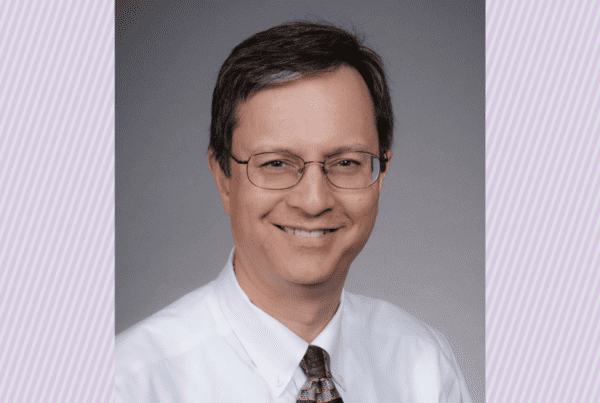There is no typical day for Dr. Mahesh Thapa, a pediatric radiologist who works at Seattle Children’s Hospital and teaches at the University of Washington School of Medicine. Sometimes he’s providing patient care; sometimes he’s teaching trainees including medical students, residents and fellows. Other days he’s flying around the world to speak at conferences.
But through it all, he’s capturing images. Not just images of human anatomy, but works of art showcasing all the places he travels to: Iceland’s mesmerizing mountains and waterfalls; Alaska’s rugged wilderness; London’s iconic tourist attractions.
His Instagram feed, @starvingphotographer, is testament to the art of his work — and many others agree. Currently, his follower count is at 267,000.
We spoke with him about his love for radiology and photography and the way they intersect in his life.
What’s in a name
Before the serious questions, we needed to get down the bottom of something: Where the whole “starving photographer” thing came from.
When asked about his Instagram username, Thapa laughs.
“That’s a relatively common question. I started my website with that name as a medical student when I really was quite poor. The name just stuck,” he says.
He may not be literally starving anymore (thankfully), but his username resonates in other ways. Starving for medical advances. Starving for a good image. The two, it turns out, are linked.
Mirror images
“I like to think my choice of getting into radiology was influenced in some degree by digital photography,” Thapa says.
He first picked up a digital camera in medical school. It was an old-school 1 megapixel point-and-shoot, a far cry from the technology available today.
He fell in love with it.
“I liked that immediate gratification in an environment where there was very little of it, in medicine,” he says.
Still, he’s come to notice ways his two worlds collide.
There are similarities in the way images are taken, for starters. In MR imaging as well as digital photography, the goal is to reduce noise, artifacts and background information to home in on as much of the central image as possible. There are also things like ISO values — which control noise and how sensitive the sensor is to light — and image contrast that relate directly to medical imaging, he says.
Then, of course, there’s the more personal side of it. He discovered he loved medicine because of the interaction with and ability to help other people.
“I enjoyed it immensely, how much blossoming there was in technology and medicine. That’s why I leaned toward radiology,” he says.
It’s also what led him to photography — and so his story comes full circle.
On being a social media ‘influencer’
“I don’t really think of myself that way, but I guess I am,” he says.
He definitely is. But it wasn’t always that way.
When Thapa started posting to Instagram, he says he was one of few photographers who shared images from a DSLR — a professional digital camera — rather than a smartphone camera. All that’s changed, now.
One thing that still sets him apart, however, is his desire to use photography as a way to help people learn.
“I’m big into education and I always post how I take the images, the parameters, my approach, and that caught on, I think, with a lot of my followers,” he says.
Getting the shot
Though much of his feed is of landscape and nature photography, Thapa says he enjoys photographing anything that captures his interest. He especially loves the natural beauty in the Pacific Northwest.
“I enjoy taking night shots, long exposures, astro photography. I love eastern Washington — the Palouse, those beautiful rolling hills,” he says.
He’s learned over the years how to get more of what he wants from his photos through better understanding of the equipment and more practice editing.
“I try to portray not just what I saw but what I felt during the process,” he says.
With mastery comes a price, though. Now that he has the skills to get the images he wants, he feels more pressure to do so. But it’s a price he’s more than willing to pay.
“Ten years ago, as long as the picture was in focus and well exposed, I was happy. But now there’s a lot more that goes into creating a compelling image. I look back at images from years ago and I can’t believe I showed them to people. I’ve become more critical of my own work,” he says.
This, of course, is what happens when a hobby becomes an artform.
“It can cause a little bit of stress, but it’s a good stress. I don’t take as many pictures but I have a lot more keepers. I’ve gotten better,” he says.
Finding a way
When examining all the work on Thapa’s plate, it’s hard to believe he gets anything done. How can someone balance a full-time job as a doctor and educator along with a part-time photography career, plus family time and all the necessities of life?
Thapa recognizes that being part of a team is a big part of it. He says he’s grateful for his family’s support of both his passions — and sometimes that support creates an opportunity for bonding, like when they travel with him.
“As long as you’ve got strong family support — or if you’re single you can make your own time — and learn to be efficient with the time that you have, you can make it happen,” he says.
That doesn’t mean things don’t get hectic sometimes. But he believes that when you have a passion for something, finding the time is easier.
“I just find a way somehow,” he says.
Though photography and radiology are in some ways two sides of the same coin, they also satisfy different needs for Thapa: photography lets him be artistic, and radiology engages his analytical side.
He wouldn’t have it any other way.
“Both are different parts of my life that give me satisfaction in different ways,” he says. “I don’t see myself doing just one or the other. It’s a nice balance.”


